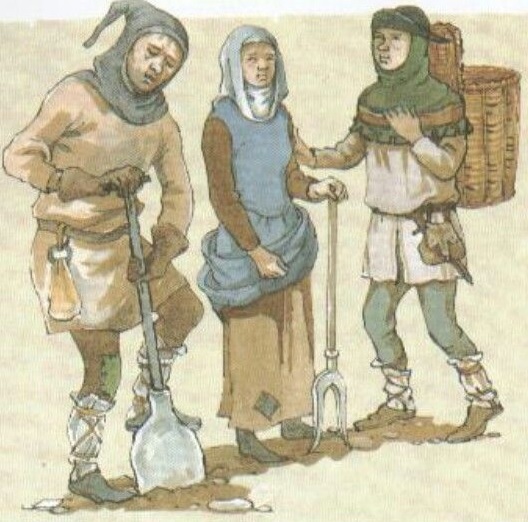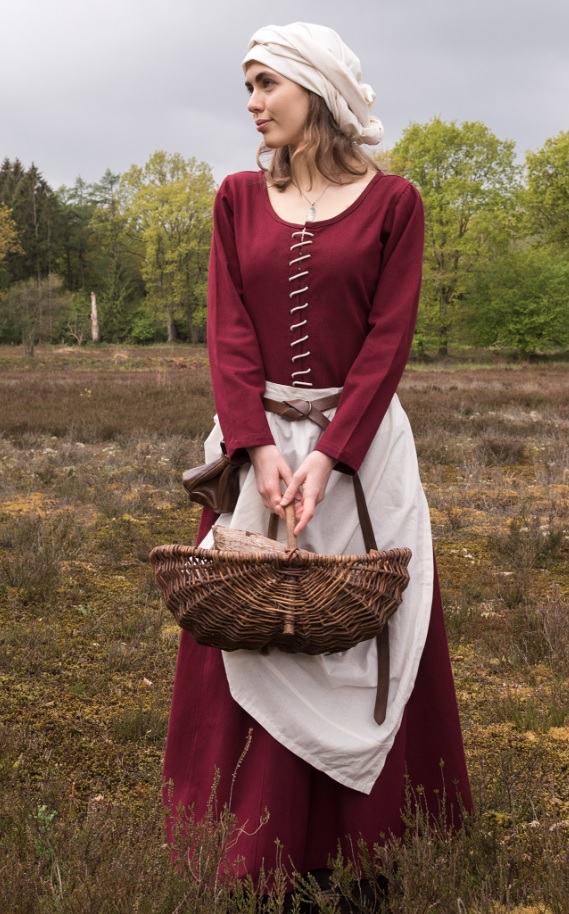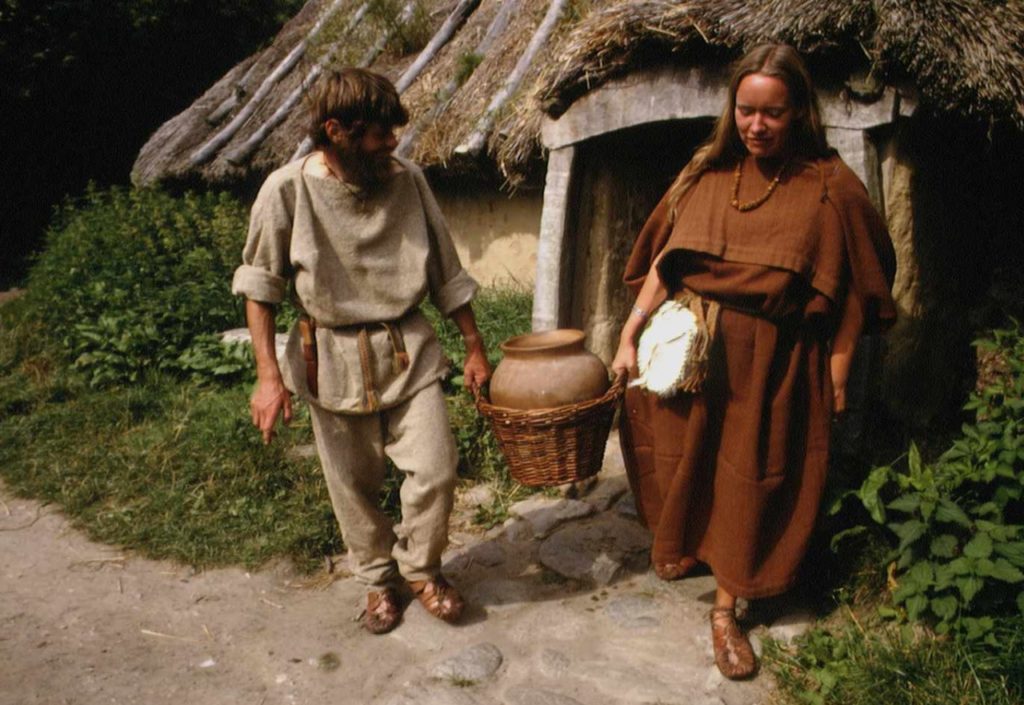During the medieval period, clothing for peasants was simple, practical, and often handmade from natural materials. Their clothing was primarily designed for functionality and warmth, as the majority of their lives were spent working the fields. Peasant clothing was also heavily influenced by the local climate and resources available to them.
Cote – Peasant Attire
The word “cote” (sometimes “Cotte”) was used in the medieval period to refer to a type of clothing worn by peasant and commoners, specifically an outer tunic or surcoat which was worn over a shirt or a shift, it was a simple and practical item of clothing that was easy to make and was worn by both men and women.

This type of clothing was often worn over the top of other garments and served as a protective layer against the elements. A cote was usually made out of linen or wool and came in various lengths, with a belt to define the waistline. It was basic and versatile clothing that provided enough warmth and covered the body sufficiently.
Men’s Clothing
Medieval peasant men typically wore a linen shirt, along with a tunic that reached mid-thigh. The tunic was typically made from wool and was belted at the waist. The men would also wear leggings, made from wool, that were either tucked into boots or worn over them.
Peasant men would also wear a cloak, which was a piece of thick woolen fabric that was worn around the shoulders and fastened at the neck.
Women’s Clothing
Medieval peasant women would typically wear a linen shift, which was a simple undergarment worn next to the skin. Over the shift, they would wear a long tunic that reached to their ankles, made of wool or linen.
Women would also wear a wimple, a piece of cloth that covered the head and neck, and was often secured with a headband. A woolen gown was worn over the tunic, often with an apron.

Material
The primary material used for peasant clothing was linen and wool, as they were readily available and relatively inexpensive. Linen, made from flax plants, was used for undergarments and shirts, while wool, obtained from sheep, was used for outerwear such as tunics, cloaks, and leggings. Hides and furs were also used for winter clothing and footwear.
Footwear
Peasant footwear was made from sturdy and durable materials like leather or woven rushes.
Shoes or boots were often worn, but they would also go barefoot during warm weather. For colder weather, they would wear thick boots or shoes made from animal hide.
Accessories
Peasants would accessorize their clothing with belts, bags, and jewelry. These were often made from materials like leather, wood, and metal.
Belts were worn to hold up their tunics and leggings and bags were used to carry tools, food and other items. Jewelry was also worn, but it was simple and made from materials like bone, wood or metal.
Colors
Peasant clothing was often undyed and retained the natural colors of the materials used. This means that linen was typically a creamy white, wool was a varying shades of brown, and leather a tan.

However, in some regions, certain colors were obtained by using certain kinds of dye. They would use natural dyes like berry juice or flowers to achieve colors like red, blue or yellow.
Conclusion
Medieval peasant clothing was simple and practical, designed for functionality and warmth. The primary materials used for clothing were linen and wool, with hides and furs used for winter clothing.
Clothing for men and women consisted of a tunic, leggings, and boots for men, and a shift, tunic, wimple, and gown for women. Accessorizing with belts, bags and jewelry was common and colors were mostly natural, usually undyed. Peasant clothing was not only an essential means of survival during medieval time, but also a reflection of their lifestyle and society.
